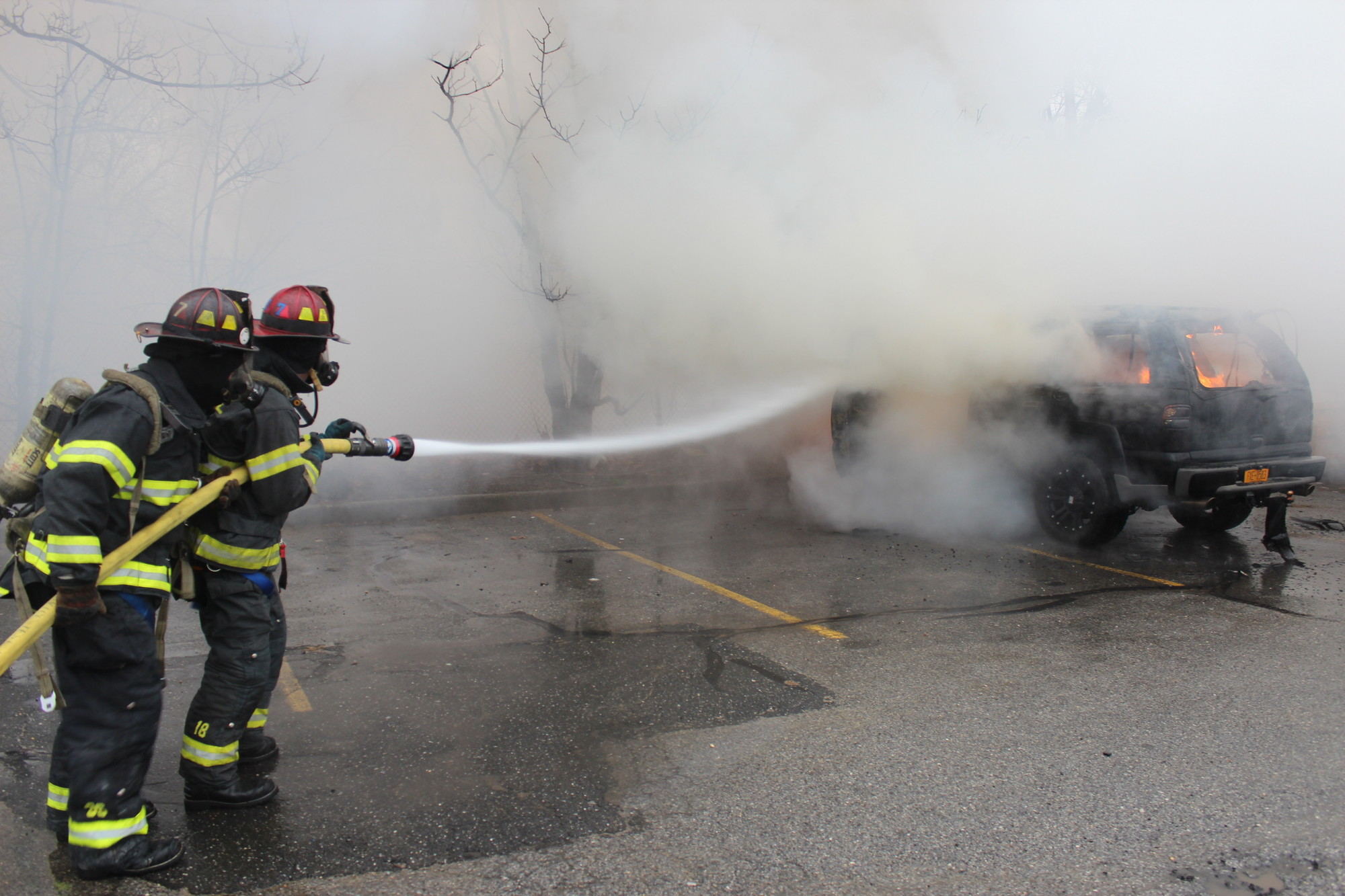Bellmore F.D. receives exceptional rating
Classification may reduce insurance rates for local properties
The Bellmore Fire Department recently received a distinguished public protection rating, which, officials said, could lower property owners’ fire insurance rates.
Department officials spent months preparing materials for the Insurance Services Office, a Jersey City-based risk analysis company, which reviewed Bellmore’s ability to protect local properties from fire. The ISO recently lowered Bellmore’s Public Protection Classification rating, which is good for the department and the community.
The ISO audits and collects information about municipal fire protection in neighborhoods throughout the country every five years to assign PPCs according to a scale from 1 to 10. A rating of 1 is superior, while a 10 is substandard.
Bellmore Chief Stephen Marsar said the department improved its PPC rating from a Class 4 (very good) to Class 2 (exceptional). He explained that Bellmore is among 750 departments –– of the 49,000 rated by ISO –– to receive such a PPC.
“As chief of the department, my goal at the outset of this audit was to improve our ISO rating, and we were very successful in that endeavor,” he said. “This outstanding rating is a direct result of the hard work and dedication of our Board of Fire Commissioners, chiefs, officers, firefighters and emergency medical technicians.”
The chief also said the department’s new PPC might lower fire insurance rates for property owners in the Bellmore Fire District. Virtually all American property insurers use the ISO’s PPC ratings to calculate premiums. Bellmore officials said insurance rates in a community with a good PPC are generally lower than in a community with a poor PPC.
Marsar said there is no way to tell how Bellmore’s rating change might affect property insurance rates at this time. He said, however, that fire officials anticipate a possible slight rate reduction.
PPC ratings are based on:
- The department’s apparatus, tools and equipment
- Firefighter training, preparedness and procedures
- Emergency response times
- Hydrant and water supply system
- Emergency notification and dispatch policies

 45.0°,
Mostly Cloudy
45.0°,
Mostly Cloudy 




